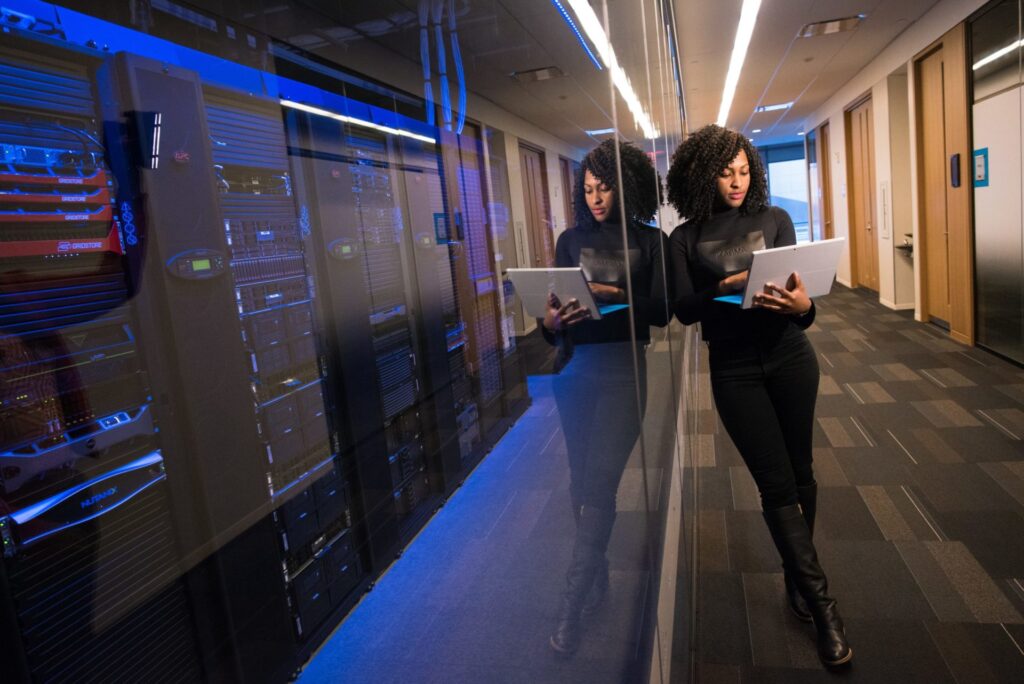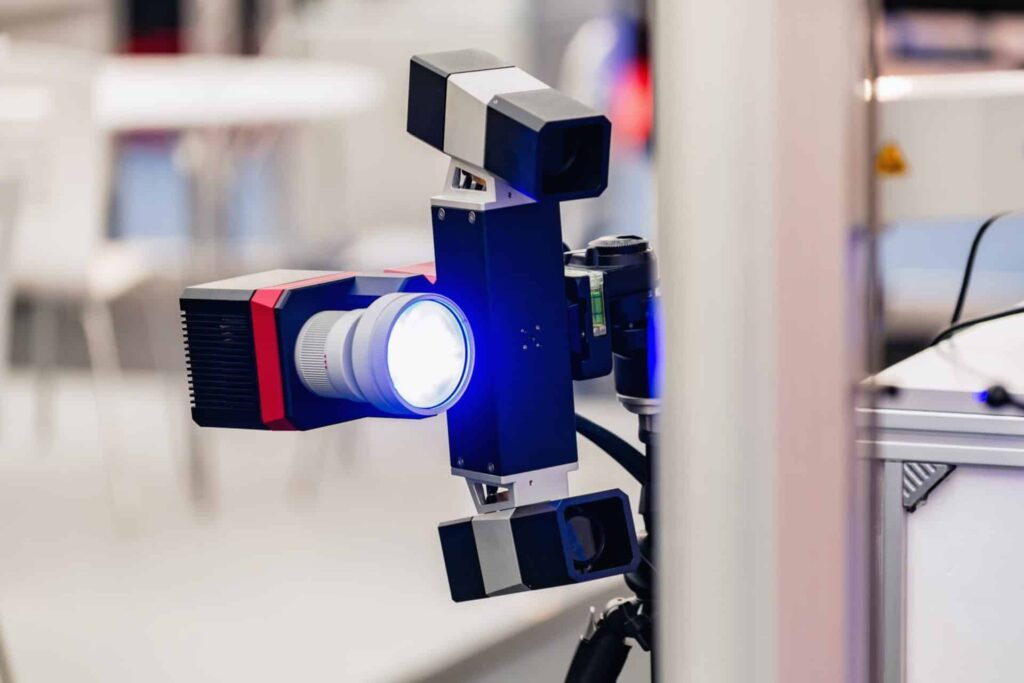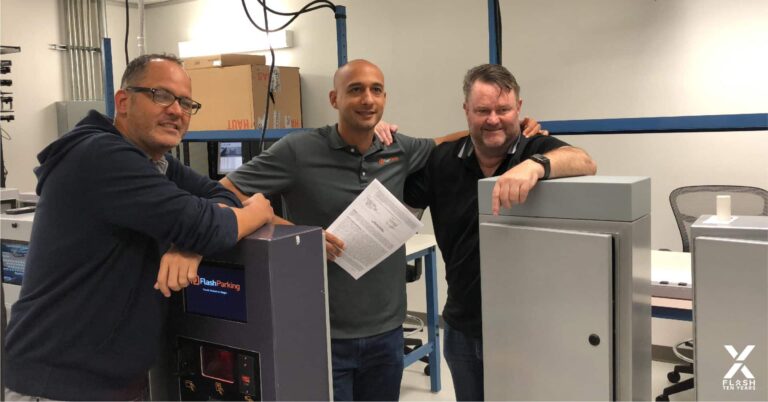In 2011, Juan Rodriguez, Eliseo Diaz, and Dean Cleaver founded a company called KleverLogic with a vision for mobile-based valet. Ten years later, their brand has transformed into FLASH: the first mobility hub operating system that powers valet, event, and parking access solutions plus a growing suite of offerings in areas like new mobility, business intelligence, and computer vision AI.
When you talk to Juan, Eliseo, and Dean, they can’t believe how far their vision has come. But if you look at the hard work, well-honed skills, and grit they brought to the table, it’s anything but a surprise.
There’s arguably one, even more influential component that has factored into FLASH’s success: challenging norms. When the team sees good, they ask “how can we do better?” — and that’s exactly what took FLASH to where it is today.
The lessons learned by outdated industries that have been transformed by technology can be applied to any industries that need innovation.
As FLASH looks forward to another decade of innovation, we look back on the defining technologies that have shaped the parking industry and so many others like it.
The quotes in this piece are sourced from private customer and collaborator events hosted by FLASH in November of 2020.
How to Keep Up with Technology: Cloud Computing

In 2011, the cloud was a revolutionary technology in the parking industry. But cloud computing has since become the standard among parking technology providers, like it has in so many other growing industries. Operating in today’s fast-paced business environment demands the kind of reliability, speed, and data processing power that only the cloud can offer.
Cloud-based systems have also opened the door for a new era of data-based decision-making. “You start to reach out and look at traffic patterns, event activity, the new restaurant that opened around the corner, and all the other social behavior items you would want to pull together to profile an asset. We’re just getting there as an industry,” explains Steve Gresh, the head of innovation and technology at LAZ Parking.
So many of the industry’s most disruptive technologies, like gateless solutions and AI, owe their success to the cloud. The ability to distribute new capabilities as they’re developed is possible exclusively on cloud-based systems that support over-the-air updates.
For industries disrupted by technology, cloud computing is a must-have. Cloud was one of the first emergence technologies to incite the shift from old to new technology in the parking industry. Today, it’s an essential tool that informs asset owners and operators on how to keep up with technology.
The answer in parking, as it is in so many once-antiquated industries, is to constantly evolve supply to match demand. Cloud-based access and revenue control systems are the only way parking assets can deliver the right product at the right price to today’s informed, connected consumer.
Turning Data into Action

With the cloud powering insights into consumer behavior, parking assets have the ability to respond in real time. Once you’ve answered “who is today’s parker?”, it’s time to ask “what does today’s parker want tomorrow?”
From what FLASH has seen and heard from customers over the past year, touchless access and payment habits from 2020 seem to be sticking around. But what else can we expect to see demand for in 2021 and beyond?
Gresh sees “a lot of money being raised and invested in proximity services, micro-warehousing, delivery, dark kitchens, scooters, and charging. All these ancillary services to parking and real estate are getting a lot of attention.”
“The big play is going to be fleets of electric vehicles,” according to Mark Henderson, Head of Sales for EVBox North America. Charging a small fee for a place to plug in is a great way to glean a little more profit from each transaction. But Henderson believes the real value in attracting EV customers is not the revenue from charging itself, but rather, the opportunities you have with that captive consumer.
“One of the benefits of having what we call Level 2 charging – or alternating current charging – is that if somebody wants to fill up their car, it’s going to take three or four hours. And in that time, you have an opportunity to direct people to one of your retailers,” explains Henderson.
Offering future-ready services like EV charging does more than please customers, it gives them a reason to stick around and grows the value of their transaction – from parking garage to storefront.
Power AI in Parking Technology

Precision has never been more important for garages that are starting to engage in these high-value transactions. That’s why Artificial Intelligence (AI) is so essential to the acceleration of digital transformation in industries like parking.
Eve Machol is the director of airport and transportation industry transformation for the US state and local government market at Microsoft. She specializes in real-world applications of sophisticated IoT and analytics technology, which is exactly what intrigued her about the impact FLASH is having in the parking industry. Her inspired approach to once-antiquated system is shared by so many others discovering creative use cases for emerging technologies.
“It’s going to be so amazing to think about a parking garage two years from now” Hunter Dunbar, FLASH’s AI and computer vision manager tells us. He develops FlashVision, the AI Platform that powers our LPR solution and will soon be releasing Car Counting and Car Signature products.
“The AI platform that we are building is a pipeline for data collection. We have a team of people that know how to look at that data, annotate it, build a model, test that model, deploy the model, and quickly update it,” Dunbar explains. It’s a complete solution for dynamically responding to an unpredictable environment like a parking garage.
Asset owners and operators will have unparalleled insights into the behavior of their customers – and the tools to respond in real time. For FLASH customers, that tool kit is ever expanding. Every day, a dedicated team of developers digs down into owners and operators’ greatest challenges and opportunities to develop tomorrow’s most disruptive technologies.
Dunbar sees variety in the potential applications for FLASH’s AI platform. “After every customer meeting I have,” he says, “I ask: if you could identify anything – whether it’s recognizing specific fans of a football team or golf carts or shopping cards that are in your lot – what would it be? And I can turn that model around in six weeks.”
“That’s why partners like FLASH are tremendous,” responds Machol, “because it’s not aspirational, it’s actual.”

